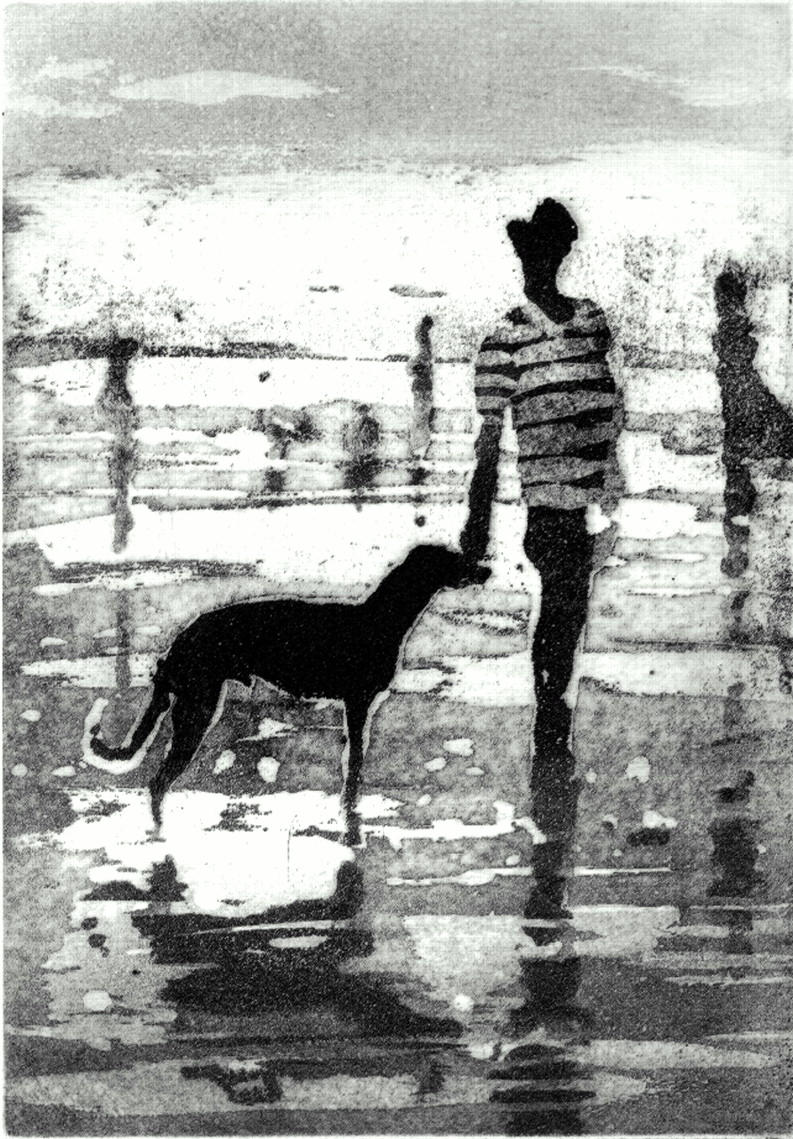A meta-analysis of randomized controlled trials of the presence or absence of paintings in wards has demonstrated some far-reaching results. Looking at paintings while confined to bed is estimated to lower the blood pressure by a mean of 5 mmHg and to raise wellbeing by an average of seven QUALIs (quality-adjusted laughter indices); these results, if extrapolated across the UK, could save £40 m in the prescription of beta-blockers and £120 m in the prescription of antidepressants. A government spokesman promised to recruit 120 artists-in-residence over the next ten years. Of course I made that all up, yet it is not all that far-fetched. These thoughts occurred to me on a journey back from Exeter where I had attended an all-day conference to launch an evaluation of the Exeter Health Care Arts Project1.
The Royal Devon & Exeter Hospital is a low-rise modern development built around a series of courtyards. The courtyards contain pieces of modern sculpture set amongst peaceful gardens both Zen and non-Zen in their inspiration. The walls are richly covered with contemporary art and photography (Figure 1). The entrance hall has magnificent tapestries and mosaics, and the chapel is one to die for. Mr Peter Senior, Director for the Arts for the Health Department at Manchester Metropolitan University, had been commissioned to audit and evaluate this extraordinary collection. As a scientific exercise it lacked something of the rigour of the randomized controlled trial or the case—control study central to the practice of evidence-based medicine. Essentially, staff and patients were asked whether they liked the environment and whether or not their life was enriched by the beautiful things that surrounded them.
Figure 1.

Low Tide II. Etching by Lucy Willis. Exhibited by Exeter Health Care Arts, at Royal Devon
In the passionate debate that followed, it was possible to witness the audience polarized into strict scientific empiricists and fuzzy-logic experientialists. Steeped in the traditions of controlled trials and an advocate of the scientific process, I was initially more sympathetic to the scientific wing of the audience. There would be no great difficulty in designing an experiment whereby patients requiring radiotherapy were randomized into one of four bunkers in a 2 × 2 factorial design. One bunker would have its grey walls unadorned. Another bunker would be filled with Mozart's music; a third would be adorned with murals by Raoul Dufy, and the fourth would have both the art and the music. Outcome measures would include quality of life as measured by the hospital anxiety depression score and objective measures such as natural killer cell count and relapse-free survival. However, more mature consideration on the train home convinced me that these ideas were utterly absurd—an abuse not only of the arts culture but also of the science culture.
Hospital wards and corridors are public places. They are also the temporary homes of our medical charges. Which public places are denied their fill of works of art, and how many homes contain no pictures or never throb to the beat of the bass guitar? The value of art and music are givens within our culture and the life-enhancing value of fine art is common experience. It is highly likely that the sense of wellbeing when we contemplate a work of art is associated with a lowering of blood pressure and other beneficial physiological changes—a subject well worthy of research. But these are mere surrogates for the real outcome.
Let us return to the chapel at Exeter. The architectural shape for prayer, the colour scheme on the walls, the maple furniture and the paintings and tapestries adorning the walls generate a sense of calm similar to that which I experience at the Tate Modern gallery, in the room devoted to the large abstract paintings of Mark Rothko. Whether or not you subscribe to a religious faith, time spent sitting in the chapel makes you feel good. It then occurred to me that for more than 200 years a chapel has been an integral component of a hospital, yet I have never heard a demand for a randomized controlled trial of chapels in hospitals.
In my own planning-blighted hospital, The Middlesex, of Mortimer Street, there are only two sanctuaries that are pleasing to the eye and pleasing to the spirit. The entrance hall still proudly displays the large paintings by Frederick Caylay Robinson (1864-1926) showing the nurses descending and ascending for their breakfast—an allegory for the angels of healing, flanked on each side by the three ages of man and the resurrection of the fallen from the First World War. Even amongst the hustle and bustle and the visual pollution of a decaying NHS hospital, these pictures exert a calming influence on me. The other sanctuary is the pretty little Victorian chapel which I pass most days with an envious glance at those whose time and creed allow a moment or two of contemplation.
The humanities and the sciences have their particular roles in the practice of medicine. The notion of evidence-based art is as absurd as an Impressionist school of science.
References
- 1.Scher P, Senior P. Research and evaluation of the Exeter Health Care Arts Project. Med Humanities 2000;26: 71-8 [DOI] [PubMed] [Google Scholar]


